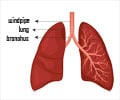Sparfloxacin Medication Information
Discover comprehensive details about Sparfloxacin, including its pronunciation, uses, dosage instructions, indications, and guidelines on how and when to take it or avoid it.
The updated prescription information covers potential side effects, precautions, warnings, and storage recommendations.
Additionally, explore the Sparfloxacin brands available in India and internationally, along with pricing information. For personalized advice, consult your healthcare provider.
Generic Name : Sparfloxacin Pronunciation : spar FLOX a sin ICD Code : Y40.8 Therapeutic Classification : AntibioticsBrand Names or Trade Names of Sparfloxacin
India :
Q Spar (200 mg) |
Tekspar |
Selax |
Sparmac |
Ulspar (200mg) |
Guspar |
Sparsbp (200 mg) |
Zospar Eye DPS (0.3%w/v) |
Span -R |
I-Par (200 mg)
International :
Zagam
Overview of Sparfloxacin
Note: It has been withdrawn from the U.S. market.
Why is Sparfloxacin Prescribed? (Indications)
This medication is a fluoroquinolone antibiotic, prescribed for community-acquired pneumonia, and chronic bronchitis. It fights bacteria in the body.When should Sparfloxacin not be taken? (Contraindications)
Contraindicated in patients who are taking antiarrhythmic drugs, and hypersensitivity.What is the dosage of Sparfloxacin?
Adult: PO- The recommended dose is 100-300 mg/day in 1-2 divided doses.How should Sparfloxacin be taken?
It comes as a tablet to take by mouth, with or without food.What are the warnings and precautions for Sparfloxacin?
• Caution should be exercised in patients with history of kidney, liver, or heart disease, epilepsy, G6PD deficiency, myasthenia gravis, slow heart rate, electrolyte disturbances, who are taking other medications, during pregnancy and breastfeeding.• Avoid exposure to strong sunlight.
• Drink adequate fluid to reduce risk of crystalluria (presence of crystals in urine).
What are the side effects of Sparfloxacin?
Most Common - Photosensitivity reaction, diarrhea, nausea, headache, indigestion, dizziness, sleeplessness, abdominal pain, itching, taste perversion, QT interval prolongation, vomiting, flatulence, and dilatation of blood vessels.Body As A Whole - Fever, chest pain, generalized pain, allergic reaction, cellulitis, back pain, chills, face swelling, uneasiness, injury, shock, infection, mucous membrane disorder, neck pain, rheumatoid arthritis.
Heart - Palpitations, electrocardiogram abnormal, high blood pressure, fast or slow heart rate, chest pain, abnormal heart rhythm, atrial flutter, bleeding, migraine, and low blood pressure.
Gastrointestinal - Constipation, loss of appetite, gum inflammation, oral infection, mouth ulcer, tongue disorder, tooth disorder, stomach flu, increased appetite, mouth ulceration, flatulence and vomiting.
Blood - Bluish, bruising, disease of the lymph nodes.
Metabolic - Gout, swelling in the extremities, thirst.
Musculoskeletal - Joint pain, joint inflammation, and muscle pain.
Central Nervous System - Tingling, nervousness, drowsiness, abnormal dreams, dry mouth, depression, tremor, anxiety, confusion, hallucinations, sleep disorder, fainting, abnormal gait, agitation, lightheadedness, emotional lability, abnormal thinking, memory loss, and twitching.
Respiratory - Asthma, nosebleed, pneumonia, runny nose, inflammation of pharynx, bronchus, coughing up blood, sinusitis, cough increased, difficulty in breathing, lung disorder, pleural disorder.
Skin - Rash, dry skin, herpes simplex, sweating, hives, skin inflammation, pimples, hair loss, skin discoloration, and herpes zoster.
Eye and ENT - Ear pain, lazy eye, sensitivity to light, ringing in the ear, eye inflammation, double vision, abnormality of accommodation, inflammation of eyelid, ear disorder, eye pain, tear disorder, and ear infection.
Genitourinary - Vaginal inflammation, painful urination, breast pain, painful menstrual period, blood in urine, irregular periods, night time urination, urinary tract infection, kidney pain, white discharge, and vulvovaginal disorder.
 MEDINDIA
MEDINDIA
 Email
Email




